The Fundamental Importance of User-Friendly Website Design
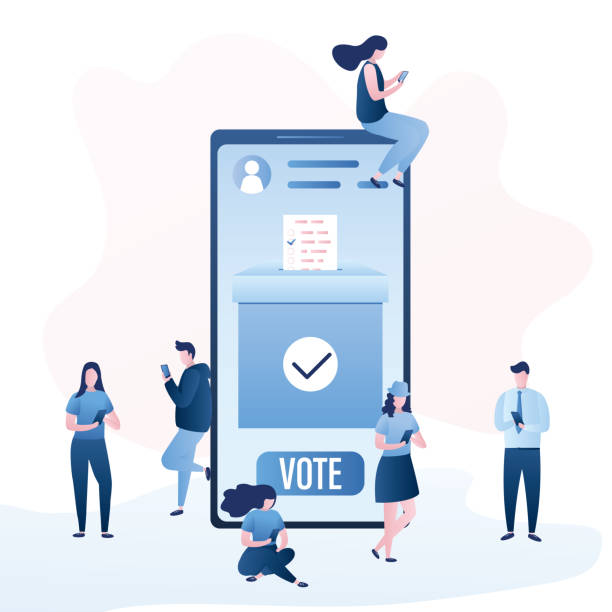
In today’s digital world, having a website is not merely an online presence, but your bridge to your audience.
Therefore, user-friendly website design is no longer a luxury choice, but a fundamental necessity.
A #user-friendly website is one where visitors can easily interact with it and achieve their goals without any confusion or problems.
This goal could be finding information, purchasing a product, or utilizing specific services.
The importance of this approach is particularly evident in the discussion of #SEO and site ranking in search engines.
Google and other search engines prioritize websites that offer a better user experience (UX).
A website that loads quickly, has easy navigation, and whose content is easily understandable, not only keeps users satisfied but also helps achieve higher rankings in search results.
The main goal in user-friendly web design is to create a positive and flawless experience for the user.
This includes everything from visual layout (user interface or #UI) to page loading speed and accessibility for people with different abilities.
Ignoring these aspects can lead to a high Bounce Rate and the loss of potential customers.
Therefore, any business seeking sustainable success in the online space must make a serious investment in #user_friendly_website design and optimizing its #user_experience and #user_interface.
This approach not only increases customer satisfaction but also directly impacts conversion rate growth and, ultimately, business growth.
In fact, a website optimized for users is a valuable digital asset that brings many long-term benefits.
Are you bothered by losing customers who visited your site to make a purchase?
Rasaweb is your specialized solution for having a successful online store.
✅ Significantly increase your online sales
✅ Build trust and professional branding with customers⚡ Get free consultation from Rasaweb experts!
Key Pillars of a Successful User Interface

After understanding the importance of user-friendly website design, it’s time to recognize the main pillars of a successful User Interface (UI).
A strong and intuitive UI is the backbone of an unparalleled user experience.
The first pillar is clarity and simplicity.
Users should not have to expend a lot of effort to find information or perform a specific action.
Visual elements such as buttons, forms, and icons should clearly indicate their purpose and be easy to use.
The second pillar is consistency and uniformity.
Consistent use of design patterns, colors, fonts, and element placement across all website pages conveys a sense of familiarity and trust to the user and helps them navigate the site without confusion.
This consistency is crucial in user-friendly website design.
The third pillar is appropriate feedback.
Every user interaction with the website should be accompanied by clear feedback; for example, by changing the color of a button after a click or displaying a confirmation message after form submission.
This feedback assures the user that their action was successful.
The fourth pillar is efficiency and minimal effort.
The design should enable users to achieve their goals with the fewest steps and least time.
This includes optimizing forms, reducing the number of clicks to reach a destination, and providing shortcuts when necessary.
Finally, aesthetics also play an important role.
A beautiful and attractive user interface not only creates a positive visual experience but also lends a sense of professionalism and credibility to the website.
However, it should be noted that beauty should never sacrifice functionality.
It is a combination of beauty, efficiency, and clarity that ultimately leads to the creation of a truly user-friendly website design and encourages users to return to your website.
Understanding the Audience and Deep User Experience

The core of any user-friendly website design is a deep understanding of the audience.
Without a precise understanding of users’ needs, behaviors, goals, and challenges, any attempt to design an optimized website is doomed to fail.
This is where the concept of “user research” comes in.
User research includes various techniques such as creating User Personas, drawing User Journey Maps, and even using Empathy Maps.
Each persona is a semi-fictional character of your ideal user, encompassing demographic information, goals, motivations, frustrations, and behavioral patterns.
These tools help designers empathize with their users and view the design from their perspective.
Drawing a user journey map allows you to follow the user’s exact path, step by step, from the moment they enter the site until they reach their final goal.
This process identifies Pain Points, opportunities for improvement, and moments of delight.
For example, if users encounter problems during the payment stage, the user journey map clearly reveals this weakness and paves the way for process improvement.
Empathy in user-friendly website design means that the designer puts themselves in the user’s shoes and becomes intimately familiar with their problems and needs.
This human-centered perspective ensures that design decisions are based on real data and human insights, not just guesswork.
With this approach, the website will not only be visually appealing but will also effectively respond to user needs and provide a deep and meaningful user experience, ultimately leading to customer loyalty and increased engagement.
In the following, to clarify the concept of persona, we present a table showing the main components of a persona:
| Persona Element | Description |
|---|---|
| Name and Image | A name and image to make the character more tangible. |
| Demographic Information | Age, occupation, education level, place of residence, etc. |
| Goals and Motivations | What the user wants to achieve by using the site. |
| Challenges and Pain Points | Obstacles the user encounters on their journey. |
| Behaviors and Habits | How they use technology, similar websites, purchasing habits. |
| Quote | A short sentence that expresses the user’s attitude. |
Information Architecture: Organizing Content for Easy Access
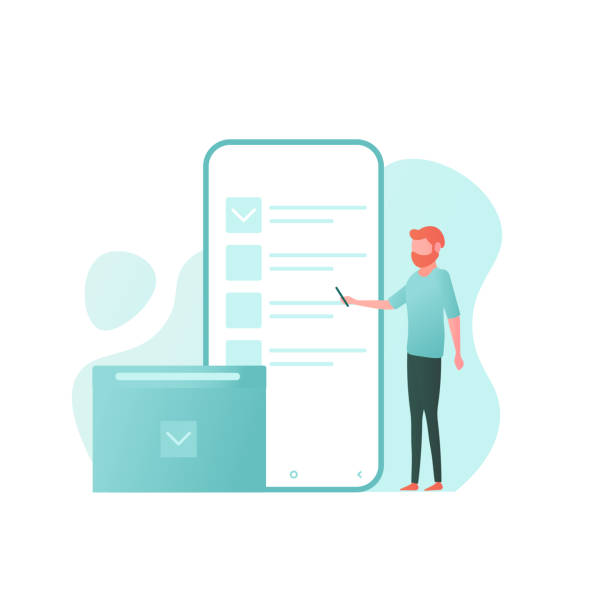
One of the fundamental pillars of user-friendly website design is “Information Architecture” (IA).
IA refers to how content is organized, structured, and labeled on a website so that users can easily find the information they need and navigate the site.
Imagine having a large library; without a sorting system, indexing, and guidance, finding a specific book would be almost impossible.
Your website is exactly like that library.
Poor IA leads to user confusion, increased bounce rates, and ultimately, loss of visitors.
Effective IA significantly improves the user experience and helps users browse your site with greater confidence.
Key elements of information architecture include:
1.
Organization Systems: This includes how content is categorized and grouped, such as using thematic, alphabetical, or chronological categories.
Choosing the appropriate system depends on the type of content and user goals.
2.
Labeling Systems: How links, menus, and titles are named and labeled.
Labels should be clear, concise, and understandable to users to unambiguously indicate the content behind each link.
3.
Navigation Systems: These are mechanisms that guide users through the site, such as main menus, submenus, breadcrumbs, and internal links.
Intuitive and consistent navigation is the key to success in creating a user-friendly website design.
4.
Search Systems: Strong and efficient search functionality for quickly finding information, especially on websites with a lot of content.
Good IA enables users to access the information they need without much thought.
This means reducing friction in the user experience and increasing overall satisfaction.
Information architecture is the foundation of user-friendly website design, and without it, even the most beautiful user interface cannot be effective.
Are you tired of losing business opportunities due to not having a professional corporate website?
Rasaweb helps you create the best first impression with professional corporate website design:
✅ Create a powerful and trustworthy image for your brand
✅ Easier attraction of potential customers and improvement of online standing
⚡ Get a free corporate website design consultation!
Aesthetics and Its Role in User Attraction
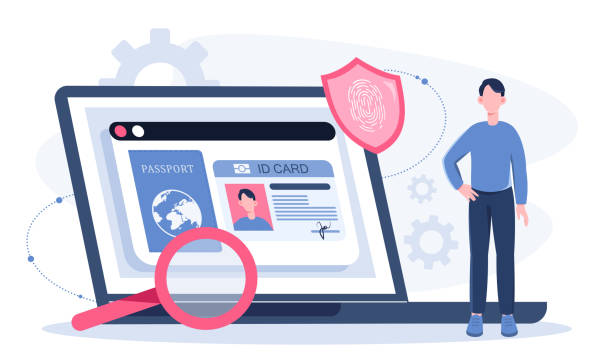
Alongside functionality and usability, Aesthetics play a vital role in attracting and retaining users in user-friendly website design.
Imagine entering a room; if it’s clean, tidy, with harmonious colors and appropriate lighting, you’ll feel good and have a greater desire to stay there.
Your website is similar.
Users’ first impression of a website is often visual.
Attractive visual design not only makes the site appear more professional but also conveys a sense of trust and credibility to the visitor.
This includes careful selection of colors, fonts, images and videos, as well as whitespace and balance in element arrangement.
The psychology of colors greatly impacts users’ emotions and behaviors; for example, blue usually evokes trust and calm, while red can indicate passion and energy.
Choosing the right color palette that aligns with your brand and message is crucial.
Likewise, typography, or the selection and arrangement of fonts, also influences readability and the overall feel of the site.
Legible fonts and a proper visual hierarchy of text encourage users to stay and read more.
Aesthetics is not just about “being beautiful,” but about creating a pleasant and inviting user interface that is enjoyable to interact with.
The balance between beauty and functionality is crucial; a beautiful website with complex navigation still provides a poor user experience.
The ultimate goal in user-friendly website design is to create an immersive experience that not only guides the user to their goal but also visually captivates them throughout the process, leaving a lasting impression.
Intuitive Navigation and Smooth Interaction
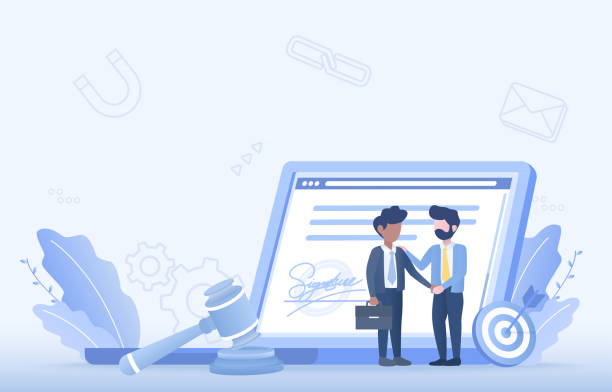
One of the main pillars of a user-friendly website design is intuitive navigation and smooth interaction.
Navigation refers to the set of paths and tools that enable users to move through different pages of a website and access the information they need.
Intuitive navigation means that users instinctively know where to click or how to access different sections of the site without needing to think or search extensively.
This feature is crucial for an excellent user experience.
Key navigation elements include main menus (usually located at the top of the page or in a sidebar), submenus, breadcrumbs that show the user’s path, and of course, on-site search functionality.
Effective navigation should be:
1.
Visible: Navigation elements should be easily found on the page and not hidden.
2.
Consistent: The location and appearance of menus should be consistent across all pages to prevent user confusion.
3.
Clear: Labels and menu titles should accurately describe the content behind them.
4.
Simple: Avoid excessive complexity in menu structures.
In addition to navigation, smooth interactions also play a crucial role in user-friendly website design.
This includes quick responsiveness of elements (like buttons and forms), subtle animations that provide feedback to the user, and ease in performing key operations such as filling out forms or completing the purchase process.
Call-to-Action (CTA) buttons should be prominent and clear, guiding the user to take the next step.
For example, an “Add to Cart” or “Contact Us” button should be designed to attract the user’s attention.
Intuitive navigation and smooth interactions not only help users quickly achieve their goals but also make their overall experience more enjoyable and increase the likelihood of their returning to your website.
Responsive Design and Inclusive Accessibility

In the current era, a truly user-friendly website design must be “Responsive” and “Accessible”.
Responsive design means that your website should be able to automatically adjust its layout and content to the size and orientation of the user’s device screen, whether on a desktop computer, tablet, or smartphone.
Given the significant increase in mobile device usage for internet access, having a responsive website is no longer a competitive advantage but an industry standard.
Google also prefers mobile-friendly websites in its search results rankings.
The absence of responsive design can lead to the loss of a large segment of the audience.
Alongside responsiveness, accessibility is also a vital aspect of user-friendly website design.
Accessibility means designing a website in such a way that people with different abilities (such as those with visual, hearing, motor, or cognitive impairments) can also easily use it.
This is an ethical responsibility and, in many countries, a legal requirement.
Adhering to WCAG (Web Content Accessibility Guidelines) standards can help improve accessibility.
Actions such as adding alt text for images, using sufficient color contrast, providing captions for videos, and ensuring keyboard navigability are just a few examples of accessibility considerations.
A website that is both responsive and accessible ensures that all users, regardless of their device or limitations, can best benefit from your content and services, which is a hallmark of a truly inclusive and user-friendly website design.
For a better understanding, a simple table of key tips for responsive design and accessibility is provided:
| Aspect | Key Tips for User-Friendly Design |
|---|---|
| Responsive Design |
|
| Accessibility |
|
Performance Optimization: Loading Speed and Smooth Experience

Website loading speed is one of the most important factors in user-friendly website design, often overlooked.
Even if your website is visually appealing and intuitively navigable, you will lose users if it loads slowly.
Research shows that most users expect a website to load in less than 2 to 3 seconds, and if this time is exceeded, the likelihood of users abandoning the site significantly increases.
Furthermore, site speed is a crucial factor in SEO rankings by search engines like Google; faster websites achieve better rankings.
Therefore, performance optimization is essential for online success.
Several factors influence website loading speed:
1.
Image Size: High-quality, unoptimized images can severely slow down loading speed.
Using appropriate image formats (like WebP) and compressing them without losing quality is crucial.
2.
Optimized Coding: Large and unnecessary JavaScript and CSS codes can reduce speed.
Minification and concatenation of code files can help.
3.
Suitable Hosting: Choosing a quality hosting service with high-speed servers significantly impacts server response time.
4.
Caching: Using browser and server caching techniques helps store website data on the user’s device, allowing the site to load faster on subsequent visits.
5.
Using a CDN (Content Delivery Network): CDNs distribute your site’s content across various servers worldwide, delivering content from the closest server to the user, which increases speed.
A fast website provides a smooth and pleasant user experience that not only keeps users satisfied but also helps increase conversion rates and reduce bounce rates.
Therefore, in the process of user-friendly website design, performance optimization and loading speed should be considered from the outset and continuously monitored and improved.
Did you know that 94% of a company’s first impression is related to its website design?
Rasaweb helps you create the best first impression by providing professional corporate website design services.
✅ Create a professional and trustworthy image for your brand
✅ Easier attraction of potential customers and improvement of online standing
⚡ Get a free corporate website design consultation!
Continuous Testing and Feedback: Design Improvement
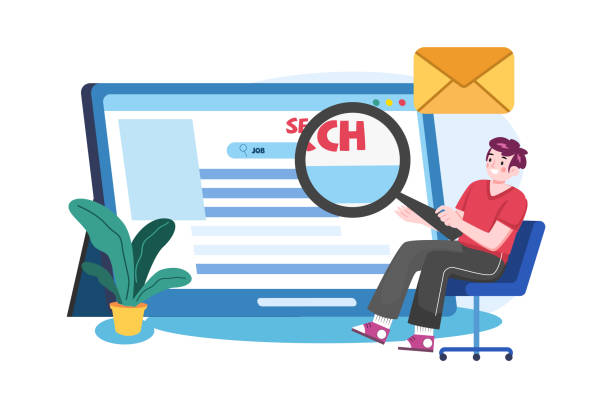
The process of user-friendly website design never ends; rather, it is a continuous cycle of testing, feedback collection, and improvement.
Even after launching a well-designed website, user behavior, technologies, and their expectations change over time.
Therefore, continuous testing and feedback are crucial for maintaining and enhancing usability and user satisfaction.
This stage ensures that your design always provides the most optimized experience.
There are several methods for testing and gathering feedback:
1.
Usability Testing: In this method, real users perform specific tasks on the website while designers and researchers observe and record their behavior and comments.
This method reveals navigation issues, ambiguities in text, and other weaknesses in the user experience.
2.
A/B Testing: Two different versions of a page or an element (such as a call-to-action button) are randomly shown to two groups of users to determine which version performs better.
This is highly useful for conversion rate optimization.
3.
Data Analysis (Analytics): Using tools like Google Analytics to monitor user behavior, such as pages visited, time spent on each page, bounce rate, and conversion paths.
This data provides valuable insights into how users interact with the site.
4.
Heatmaps & Session Recordings: Heatmaps show which parts of the page users click on most or hover their mouse over, while session recordings visually display complete user interactions with the site.
5.
Surveys and Feedback Forms: Directly asking users about their experience, expectations, and areas needing improvement.
By collecting and analyzing this feedback, designers can make informed decisions to improve the design.
This iterative design approach allows your website to consistently align with changing user needs and continuously progress towards an ideal user-friendly website design.
The Future of User-Friendly Design: Innovation and Challenges

The world of user-friendly website design is in constant evolution.
What seems innovative today might become a standard tomorrow.
Anticipating trends and preparing for future challenges is essential for every web designer and business owner.
The future of user-friendly website design lies not only in improving existing interfaces but also in exploring new frontiers of human interaction with technology.
Some emerging trends that will influence the future of user-friendly website design include:
1.
AI in UX: Artificial intelligence can be used to personalize the user experience, anticipate user needs, and provide more relevant content.
AI-powered chatbots and recommendation systems are just the beginning.
2.
Voice User Interface (VUI): With the increasing popularity of voice assistants like Siri and Google Assistant, designing for voice interaction is gaining increasing importance.
This requires a completely different design approach, as visual elements are no longer present.
3.
Augmented Reality (AR) and Virtual Reality (VR): These technologies have significant potential for creating more immersive interactive experiences on websites, especially in areas such as online shopping and education.
4.
Ethical Design and Privacy: With increasing concerns about data and privacy, designs that offer greater transparency and control to users will become more important.
5.
Microinteractions: Small details such as haptic feedback or subtle animations when clicking a button, which help improve the overall feel of the user experience and make it more enjoyable.
The main challenge on this path is keeping pace with the speed of technological changes while preserving the fundamental principles of user-friendly website design: namely, simplicity, clarity, and focus on user needs.
The future belongs to websites that are not only technologically advanced but also deeply connect with their users and provide an unparalleled and human experience.
Ultimately, success in user-friendly website design depends on our ability to anticipate future needs and provide solutions that exceed users’ current expectations.
Frequently Asked Questions
And other services of Rasaweb Advertising Agency in the field of advertising
Smart Link Building: An effective tool to increase sales with attractive UI design.
Smart Sales Automation: An effective tool to increase sales through user experience customization.
Smart Custom Software: A combination of creativity and technology to increase sales through intelligent data analysis.
Smart Customer Journey Mapping: A fast and efficient solution for campaign management focusing on custom programming.
Smart UI/UX: A new service to boost online growth through SEO-driven content strategy.
And over a hundred other services in internet advertising, advertising consultation, and organizational solutions
Internet Advertising | Advertising Strategy | Advertorial
Resources
Comprehensive Guide to User-Friendly Website Design
10 Tips for Successful Website Design
The Importance of User Experience (UX) in Website Design
Digital Success: The Role of Website Design in Business
? To be seen and grow your business in the digital world, Rasaweb Afarin Digital Marketing Agency is with you. From custom website design to SEO optimization and advertising campaign management, we pave your way to success.
📍 Tehran, Mirdamad Street, next to Bank Markazi, Kazeroon Jonubi Alley, Ramin Alley, No. 6

